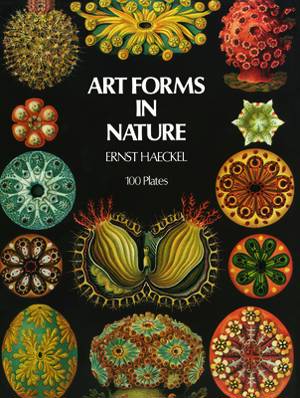
- Afhalen na 1 uur in een winkel met voorraad
- Gratis thuislevering in België vanaf € 30
- Ruim aanbod met 7 miljoen producten
- Afhalen na 1 uur in een winkel met voorraad
- Gratis thuislevering in België vanaf € 30
- Ruim aanbod met 7 miljoen producten
Zoeken
€ 21,95
+ 43 punten
Uitvoering
Omschrijving
Ernst Heinrich Haeckel (1834-1919) was renowned as one of the foremost early exponents of Darwinism. His work was credited with having caused the acceptance of Darwinism in Europe, and his popular studies ― preaching the continuity of all life, organic and inorganic, from prehistoric time to the present ― converted tens of thousands of readers all over the world. Today, although no one is greatly interested in Haeckel the biologist-philosopher, his work is increasingly prized for something he himself would probably have considered secondary. These are the remarkable plates with which his work was illustrated, particularly his famous Kunstformen. The Kunstformen contains 100 beautiful lithographic plates which show a multitude of unusual life forms: Radiolaria, Foraminifera, and other forms of microscopic life; jellyfishes, starfishes, calcareous sponges, star corals, barnacles, and other sea life; mosses, lichens, red algae, ferns, fungi, orchids, and other plants; and turtles, moths, spiders, bats, frogs, lizards, hummingbirds, and antelope. With many drawings on each plate, each carefully drawn from nature, the subtle details of nature's art forms are easily compared and appreciated.
In addition to being marvelous renderings, these plates have long been noted for the peculiar emotional appeal that they have for most viewers, a premonition of surrealism with exotic organic life forms stretching back to their roots in the inorganic, and individual details drawn with awareness of subtle evolutionary changes and millennia-long developments. Artists, illustrators, and others will find them still powerful as one of the landmarks of applied art.
In addition to being marvelous renderings, these plates have long been noted for the peculiar emotional appeal that they have for most viewers, a premonition of surrealism with exotic organic life forms stretching back to their roots in the inorganic, and individual details drawn with awareness of subtle evolutionary changes and millennia-long developments. Artists, illustrators, and others will find them still powerful as one of the landmarks of applied art.
Specificaties
Betrokkenen
- Auteur(s):
- Uitgeverij:
Inhoud
- Aantal bladzijden:
- 112
- Taal:
- Engels
- Reeks:
Eigenschappen
- Productcode (EAN):
- 9780486229874
- Verschijningsdatum:
- 1/06/1974
- Uitvoering:
- Paperback
- Formaat:
- Trade paperback (VS)
- Afmetingen:
- 236 mm x 297 mm
- Gewicht:
- 498 g

Alleen bij Standaard Boekhandel
+ 43 punten op je klantenkaart van Standaard Boekhandel
Beoordelingen
We publiceren alleen reviews die voldoen aan de voorwaarden voor reviews. Bekijk onze voorwaarden voor reviews.











